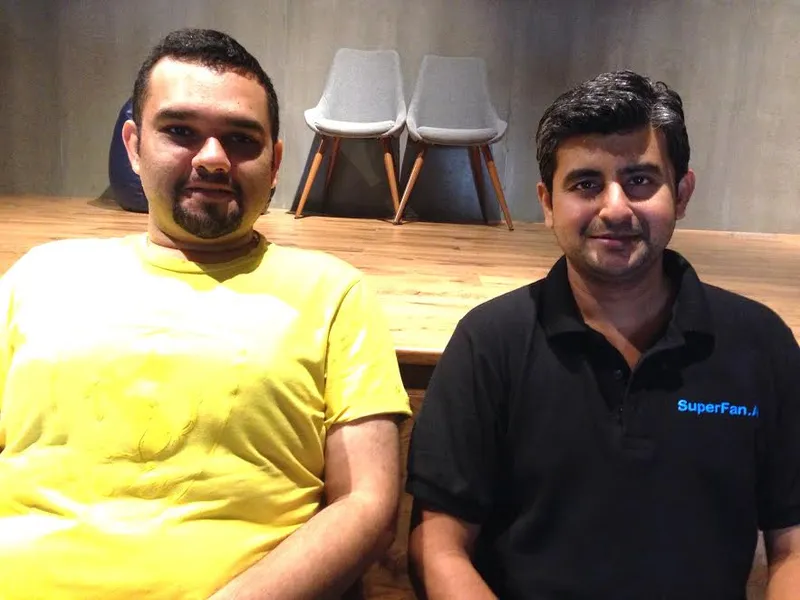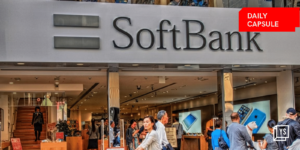In 2017 Snehaal Dhruv hit upon the idea of using Augmented Reality (AR) for chatbots. So he started Superfan Studio as an agency, creating AI bots for various brands and websites. The startup pivoted from being an agency to an AR template marketplace during the pandemic to keep its business afloat.
Superfan Studio is now called Cameraah, and has raised seed funding as a part of Techstars’ new cohort. Techstars is an early stage startup accelerator and investor. Cameraah’s platform works as a browser-based no-code tool to personalise and create augmented reality (AR) filters for social media platforms. The company’s client list include brands like Spotify, IPL, Puma, Fossil, University of Southern California, Reliance Jio, Sony, Fox, Samsung, Star Sports, World Cup, and Asian Games.
“Cameraah is on a mission to democratise the Augmented Reality experience for social, web and commerce. Our goal is to enable brands and influencers to create their own AR experiences in a fast, easy and affordable manner,” says Snehaal.

Founding team, SuperFan.ai
The funding
The startup had earlier raised a pre-seed fund of $25,000 each from US-based Travel Startups Incubator and ThinkQ Ventures LLP in 2017. The Techstars investment is the second funding by the company.
Speaking on their investment, Sunil Sharma, Managing Director, Techstars Toronto, says,
“We had been tracking Superfan – now Cameraah – for over a year following their on-stage recognition by Facebook at F8 and the subsequent feature by YourStory. We felt that the need for creators to have a powerful tool to allow for no-code augmented reality products that can be easily deployed on the world’s biggest social media platforms was going to explode alongside the rapid rise of the influencer market.”
Sunil adds, “We saw how Cameraah’s software was being embraced in the Indian market, and made the offer to invest and help them expand to North America, which is home to the biggest social media platforms in the world, not to mention brands.”
Work on AR Experiences
Snehaal adds when they started Superfan Studio, the startup was focussed on providing professional services to brands that wanted to create AR experiences. The team soon realised that this could be made repeatable, with an intuitive tool that can power their needs.
“Fast forward, late last year, we launched as Cameraah, a self-service platform, where brands / marketers / SMBs / enterprises can sign up, and publish AR experiences either by picking (and customising) our pre-made templates or by leveraging our creator network for a customised AR experience. We are headquartered in San Francisco, California with operations in USA and India,” adds Snehaal.
Besides Snehaal, the core team comprises of Hardik Shah, who has worked for the likes of Videogram and Microsoft, Krutin Shah, who has worked at Deloitte, and Jay Jobanputra, who has worked at ThroughPut, Progress, DataRPM (acquired by Progress), Loom Systems (Acquired by Service Now), Fintellix (acquired by Verisk Analytics). The total team size is 16 at present.
The idea
The idea had primarily stemmed from the challenges the team had seen with small and medium brands who either did not have time or were working with small budgets, but still wanted to create elaborate experiences and leverage AR.
“The demand started growing and that’s when it hit us – if we created this platform, if we truly democratise the creation and publishing processes, then this could really scale. It not only allows organisations and brands who don’t have massive design and marketing teams leverage the best out there, but also gives them the same level playing field as some of the big brands,” adds Snehaal.
The workings
He adds that the product has four pillars –
- Create: Create module enables all the tools, assets and pre-made templates required to create Ah! worthy AR experiences
- Manage: Manage module makes it seamless for a brand or business to deploy these AR experiences on social (FB, Insta, Messenger, Portal, Snap, TikTok), web (any browser or device) and channel plugins like deploying on ecommerce platforms(Shopify, WooCommerce, etc)
- Analysis / Extend: Extend module makes it easier for these brands to compare against other omni channel customer engagement and conversion formats, and experiment faster. Developers can also extend and build on top of our platform. We will also be releasing WebSDKs, iOS and Android SDK, and Unity SDK, to seamlessly extend our capabilities into their existing user workflows.
- Marketplace: Marketplace enables AR creators and developers to contribute to our platform, earn additional revenue, and become one of our verified partners to drive additional business to them.
Working on a subscription model, the deeptech startup’s subscription plans are either $14.99 per month or $99.99 annually. For enterprises, the plans start from $499 per month. For custom AR services, the prices begin from $999 onwards.
“Our services revenue for the last 12 months will be north of $500K. For our platform, we already have 1500 signups for people wanting to get in, and 150 creators. We should be opening up the flood gates by end of April,” adds Snehaal.
The market
The AR-VR space is fast picking steam. In November last year, the Flipkart Group had acquired Bengaluru-based AR startup Scapic, which was among YourStory’s chosen Tech30 startups in 2018. According to CB Insights, media companies, movie studios and even VCs are looking closely at the space. A report by the business analytics platform said that over $3.4 billion has so far been pumped into this space.
According to Statista, the global augmented and virtual reality market amounted to a forecast of $18.8 billion this year. Companies like US-based CameraIQ, UK-based PoplAR, and Catchar.io are some of the players in the AR template market.
“Our competitive edge lies in our ability to give brands the self-service model to publish and manage across social, web and commerce channels. Our revenue model is subscription fee to get started, and then additional pricing for enterprises for scaling up. With Cameraah, the lowest common denominator is 2D images,” says Snehaal.
The team is looking to build additional tools that will continue to help brands further leverage new immersive engagement formats for marketing, commerce and other applications. Snehaal adds they want to help reduce CAC and also improve margins.
“Our vision is to democratise experiences through the camera, and provide brands with the ability to connect with their consumers in a never before manner, thereby helping consumers get a better feel of what they are buying, reducing wastage in terms of time, shipping, and costs in the bigger picture.”


![Read more about the article [Weekly funding roundup] Marquee VCs lead investments into Indian startups; raise $157M](https://blog.digitalsevaa.com/wp-content/uploads/2021/02/Weeklyimage-1577460362436-300x150.png)


![Read more about the article [Funding alert] Fintech unicorn Pine Labs raises $50M from PE major Vitruvian Partners at $5B valuation](https://blog.digitalsevaa.com/wp-content/uploads/2022/02/Featureimages-newdeck13-1641292542575-300x150.png)

![Read more about the article [Funding alert] Fintech firm Recordent raises $400K in angel round](https://blog.digitalsevaa.com/wp-content/uploads/2021/11/recordent-1637664885539-300x150.png)


